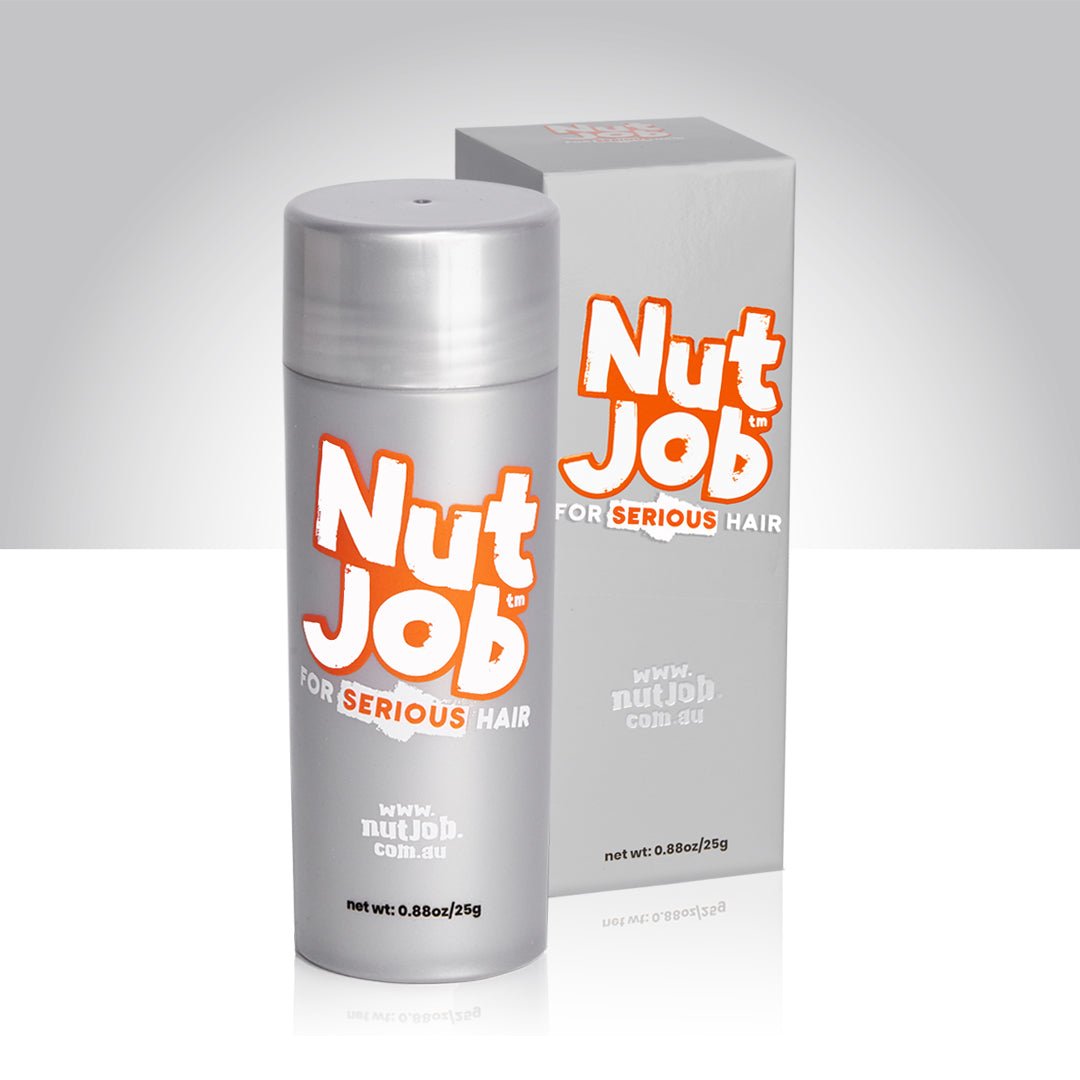
Best Treatment for Hair Loss in Men
In Australia, the treatment of male hair loss can involve various approaches, ranging from over-the-counter solutions to prescription medications and surgical interventions.
Using hair fibres is the most obvious place to start.
Hair fibers have gained popularity as a cosmetic solution for individuals experiencing male pattern hair loss. These fibers, often made from materials like keratin, or wool (animal sources) or cotton (natural vegan source), are designed to mimic the appearance of real hair and provide a temporary and immediate cosmetic improvement for those with thinning hair or balding areas.
Fill in balding areas and thin patches
The application of hair fibers is a straightforward process. These microscopic fibers are statically charged to cling to existing hair strands, creating the illusion of thicker and fuller hair. They effectively fill in gaps between existing hairs and cover exposed scalp areas. This can be particularly useful for individuals with mild to moderate hair loss who seek a quick and non-invasive method to improve the cosmetic appearance of their hair.
One of the key advantages of hair fibers is their ease of use. They can be applied at home as part of a daily grooming routine and do not require a complex application process. Additionally, they are available in various colors to match different hair shades, providing a natural and seamless blend.
Another advantage of hair fibres is they provide increased self esteem allowing the person with hair loss to enjoy life without the stress of hair loss. It is well documented that the stress of hair loss, contributes to more hair loss.
Hair fibres removes that stress and allows a man to go about his day not worrying about his hair, his balding crown, or what people might think.
While hair fibers offer an immediate solution for the visual aspects of male hair loss, it's essential to recognize that they are not a permanent remedy. The effect is temporary hair fibres wash out. They are usually applied every day.
This is a typical result after just one application of Nut Job Hair Fibres

For those seeking more lasting solutions, various medical treatments such as topical medications (e.g., minoxidil), oral medications (e.g., finasteride), and surgical procedures (e.g., hair transplantation) are available. Consulting with a healthcare professional or a dermatologist can help determine the most suitable approach based on the individual's specific condition and preferences.
Ultimately, while hair fibers may serve as a quick and convenient cosmetic fix for male hair loss, a comprehensive understanding of the available treatments and their long-term effectiveness is crucial for making informed decisions about managing hair loss.
Here are some common methods used to treat male hair loss:
Minoxidil: This over-the-counter topical medication is applied directly to the scalp. It is known to promote hair growth and slow down hair loss. Minoxidil is available in both liquid and foam forms.
Finasteride: This prescription medication works by inhibiting the action of the hormone dihydrotestosterone (DHT), which is associated with hair loss. It is taken orally and has been shown to be effective in slowing hair loss and promoting regrowth.
Low-Level Laser Therapy (LLLT): LLLT involves using devices such as laser combs or helmets to expose the scalp to low levels of red or near-infrared light. Some studies suggest that LLLT may help stimulate hair growth.
Hair Transplant Surgery: This surgical procedure involves taking hair follicles from areas of the scalp resistant to balding (usually the back or sides) and transplanting them to the areas where hair loss has occurred.
Platelet-Rich Plasma (PRP) Therapy: PRP involves drawing a small amount of the patient's blood, processing it to concentrate the platelets, and then injecting the PRP into the scalp. Some studies suggest it may stimulate hair growth.
Hair Growth Shampoos and Topical Products: There are various shampoos, conditioners, and topical products that claim to promote hair growth. While their effectiveness can vary, some individuals find them beneficial in maintaining healthy hair.
Lifestyle Changes: Adopting a healthy lifestyle can contribute to overall hair health. This includes maintaining a balanced diet rich in vitamins and minerals, managing stress levels, and avoiding harsh hair treatments.
Scalp Micropigmentation (SMP): SMP is a non-surgical cosmetic procedure that involves tattooing tiny dots on the scalp to mimic the appearance of hair follicles. It is a more temporary solution compared to hair transplant surgery.
It's important to note that the effectiveness of treatments can vary among individuals, and results may take time. Consulting with a healthcare professional or a dermatologist is recommended to determine the most suitable treatment plan based on the specific type and extent of hair loss. Additionally, individual preferences, health conditions, and potential side effects should be considered when choosing a treatment approach.












